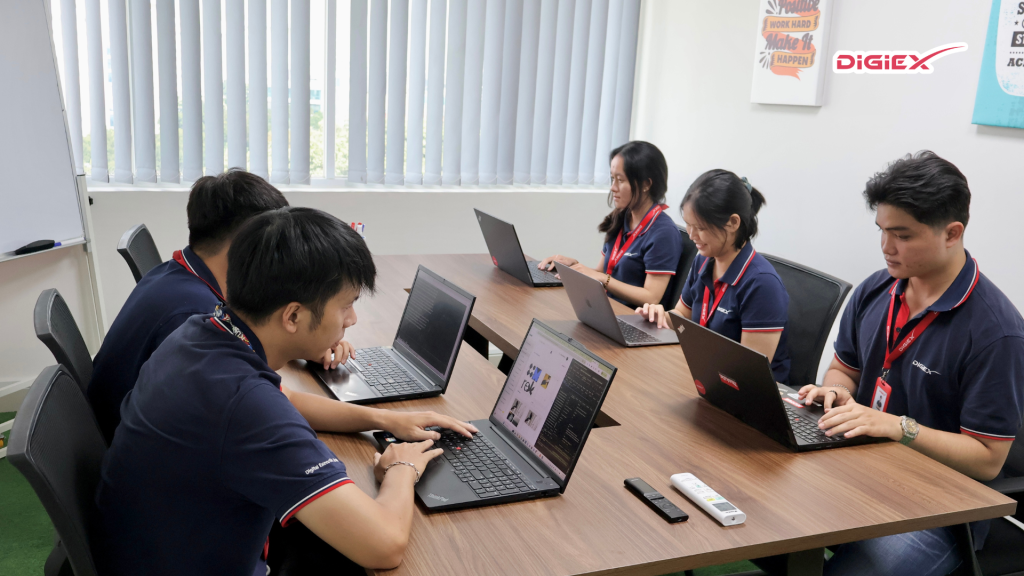Bringing a new app idea to life is an exciting but challenging journey, especially for early-stage startup founders. One of the first critical decisions is choosing between outsourcing to an MVP app development service or building an in-house development team. This choice impacts your project’s cost, speed to market, product quality, and long-term scalability. Make the wrong move, and you could burn through precious cash or miss your market window entirely. Make the right move, and you set a strong foundation for your product’s success.

Every founder faces this dilemma in an era where tech talent is in high demand and short supply. In fact, the U.S. is projected to face a shortfall of ~1.2 million software engineers by 2026, making local hiring both slow and costly. At the same time, outsourcing has gone mainstream — 59% of businesses say cost savings is a major reason they outsource development. With statistics like these, it’s no surprise that many startups consider partnering with external development firms to build their Minimum Viable Product (MVP).
But outsourcing isn’t automatically a silver bullet, and building an in-house team isn’t for everyone. This guide will help you weigh the pros and cons of each approach across the factors that matter most: cost, speed, control, and scalability.
What is an MVP and Why Does Speed Matter?
The philosophy behind an MVP is to validate your product-market fit without excessive time or money spent on features that might not matter to customers. This lean approach is crucial because roughly 35% of startups fail because they build something nobody wants. An MVP helps you avoid becoming part of that statistic by allowing you to learn fast and iterate.
Speed is of the essence in MVP development. In today’s fast-paced markets, being late can mean losing out to competitors or wasting resources on misaligned features. A quick MVP launch lets you get real user input within months, not years, so you can adjust your product roadmap based on evidence rather than assumptions. This agility can be the difference between a product that flops in isolation versus one that evolves in tune with user needs.
However, the speed of development largely depends on whether you build internally or tap external help. Let’s explore how each route stacks up.
Building an MVP In-House: Control Comes at a Cost
Opting for an in-house team means you hire your own developers, designers, and product managers to build the MVP under your roof. This route offers unparalleled control – your team will be dedicated solely to your product and deeply aligned with your company’s culture and vision. Sensitive intellectual property stays internal, and communication is as simple as turning to the person at the next desk. Many founders find comfort in this hands-on oversight.

Advantages of In-House Development: You’re effectively the captain of the ship. You can pivot development priorities on the fly, enforce your quality standards directly, and ensure that the growing knowledge about the product’s codebase stays within your company. There’s also the benefit of cultural cohesion: an in-house team “gets” your mission at a deeper level because they live and breathe your startup’s values day to day. Over time, you’re building long-term capability – a loyal engineering team that becomes a core asset for your company’s future products and updates.
However, these benefits come with significant costs and constraints. First and foremost is the budgetary impact. Hiring full-time developers is expensive, especially in tech hubs like the US or Western Europe. Mid-level software engineers in major U.S. cities command salaries in the range of $80,000–$120,000 per year (not including benefits). If you need at least a frontend and backend developer plus a product/project manager to even begin an MVP, you’re looking at upwards of $200,000–$300,000 annually in payroll for a minimal team. And that’s assuming you can even find the right talent quickly.
Time-to-hire is a hidden killer for in-house plans. The average technical hire takes around 4–6 weeks to source and interview, plus another 2–4 weeks to onboard and get them fully productive. That means you could lose 2–3 months before a single line of MVP code gets written. In a startup race, this hiring period is essentially lost time. Moreover, your initial hires might be juggling many hats (devops, QA, bug fixes, etc.) once they start, which can slow down development by an extra 30–50% compared to a larger, focused team.
Outsourcing to MVP Development Services: Speed and Savings, with Trade-offs
The alternative is to outsource your MVP development to an external team or agency – whether that’s a specialized MVP app development service, a software development firm, or even a group of vetted freelancers. Essentially, you’re hiring a ready-made team to build your product, often remotely. This path has become increasingly popular for startups that need to move fast and keep costs lean, especially if they lack in-house technical co-founders.
Key Benefits of Outsourcing:
- Faster Start and Delivery: Perhaps the biggest draw of outsourcing is speed. You skip the recruitment slog and plug into an existing team that’s ready to go. A capable development agency can often initiate a project within a week or two of signing, versus the months-long ramp-up for hiring internally. Moreover, experienced external teams typically have battle-tested development processes (agile sprints, CI/CD pipelines, QA routines). This means they can often deliver an MVP 40–60% faster than a newly formed in-house team starting from scratch.
- Cost Efficiency: Outsourcing can be dramatically more cost-effective, particularly if you leverage offshore or nearshore teams. Labor arbitrage is real – businesses can save on development costs by as much as 50–75% by outsourcing to countries with lower salary scales. For instance, U.S. agencies might charge $150/hour, but a highly qualified engineer in Vietnam might charge $30/hour – those differences add up quickly in favor of outsourcing.
- Access to Expertise and Latest Tech: Good software consultancies have diverse talent on staff – front-end specialists, back-end architects, UX/UI designers, AI/ML experts, DevOps engineers, you name it. By outsourcing, you tap into a broad pool of skills that would be hard (or very expensive) to assemble quickly on your own. Need to build a mobile app with real-time analytics and some AI features? An established MVP development service likely has people who have done exactly that, whereas your newly hired in-house devs might be encountering those problems for the first time.
- Flexibility in Scaling: Outsourcing offers a lot of flexibility. You can start with a small team to get the prototype up, then quickly ramp up more developers if you decide to expand features – often the vendor can allocate additional resources within days. Conversely, if you hit a slow period or after the MVP launch, you only need part-time maintenance, and you can scale down the engagement. You’re not stuck with idle full-time employees on your payroll. This elastic capacity is one reason 68% of companies report they can scale development faster with outsourced teams. For an early-stage startup, this flexibility to adjust team size month-to-month can be a lifesaver.
- Focus on Core Business: While the external team handles the technical build, you and your small internal team can focus on business development, marketing, customer feedback, and refining the product vision. Many non-technical founders find this division of labor extremely helpful – you outsource the complex engineering heavy-lifting so you can concentrate on strategy, fundraising, or user acquisition. In fact, if technology is not the core value prop of your business (for example, your innovation is more in the business model or market insight), outsourcing the MVP development allows you to execute without being bogged down by tech hurdles.
Of course, outsourcing is not without its challenges and risks. It essentially trades some control for speed and cost advantages:
- Less Direct Control: You won’t have the same day-to-day oversight of developers as you would with an in-house team. There’s a project manager on the vendor’s side ensuring things stay on track, but as the client, you have to trust your partner to make a lot of micro-decisions. This can be uneasy for hands-on founders.
- Communication & Time Zone Gaps: Working with an offshore team often means dealing with time zone differences and possibly cultural differences in communication. However, many companies mitigate this by overlapping work hours or having a flexible schedule. Also, the remote collaboration tools born out of the recent remote work boom (Slack, Jira, Zoom, etc.) make it easier than ever to stay in sync with a team halfway around the world.
- Quality Assurance & IP Protection: Naturally, when you hand over development to an outside party, you must ensure that quality standards are upheld and that your intellectual property (IP) is safeguarded. Vetting the vendor’s track record is important – look for testimonials or case studies, perhaps even speak to past clients. Put in place a strong contract that covers code ownership, confidentiality (NDAs), and security practices.
- Loss of In-House Know-How: One long-term consideration is that when you outsource, your company may not accumulate much technical know-how internally during the MVP phase. If later on you decide to transition to an in-house team, there will be a knowledge transfer period where your new engineers have to learn what the outsourced team built.
Despite these challenges, outsourcing has proven to be a highly effective strategy for early-stage companies. It’s telling that many of today’s tech unicorns and success stories began by outsourcing development in their infancy.
When to Choose In-House vs. When to Outsource – A Quick Guide
Both approaches have merit, so how do you decide which is right for your startup? Here are some guideline scenarios:
Choose an In-House MVP Team if…
- You have substantial funding and a longer runway (6+ months) before you need a marketable product. This lets you invest in hiring and nurturing a team without racing against the clock.
- Your startup’s competitive advantage hinges on proprietary technology or algorithms that you are not comfortable handing to a third party. Keeping development internal might feel safer from an IP perspective (though NDAs can mitigate a lot of this).
- Technical innovation is core to your business model. If you’re building, say, an advanced AI engine or a new database technology, you likely want to build a deep bench of internal technical expertise from day one.
- You want to build a long-term team culture and see the MVP as the first of many products. In-house teams become part of the company DNA and can be a foundation for future growth.
- Security or regulatory concerns demand tight control over development. For instance, if you’re in a highly regulated industry and worried about data handling, you might prefer in-house, where you can directly supervise compliance.
Choose Outsourcing for your MVP if…
- Speed to market is critical. If you need to have a product in users’ hands within a few months to seize an opportunity or show to investors, an outsourced team will mobilize faster.
- You’re working with a limited budget. If you can’t comfortably sustain an internal team’s salaries for a year, outsourcing the MVP is likely more affordable, allowing you to pay just for the development work itself.
- You (or your co-founders) are non-technical or already juggling a lot. If you don’t have the bandwidth or expertise to manage the nitty-gritty of software development, bringing in an experienced team means you can focus on your strengths (be it sales, domain knowledge, marketing, etc.).
- The project requires expertise that you don’t possess in-house. For example, you might need a machine learning component, a blockchain integration, or simply a very polished UX design – rather than attempting to recruit all those skills one by one, an agency can provide an ensemble of talent ready to collaborate.
- Your MVP requirements are well-defined and not likely to change drastically. Outsourcing works best when you can clearly communicate what you need built (though agile agencies will accommodate iterative feedback). If you already validated the concept or have a solid spec, an external team can run with it effectively.
Many startups actually use a hybrid approach: they keep a small core team in-house (maybe a CTO or one engineer who manages the project) and outsource a large chunk of the development to an external team. This can offer a balance – you maintain some internal control and architectural guidance while leveraging the speed and cost advantages of outsourcing.
Conclusion: Finding the Right Partner and Path for Your MVP
There is no universal answer to whether you should build your MVP in-house or outsource it – it truly depends on your unique situation, priorities, and resources. Early-stage startups often lean towards outsourcing to conserve cash and move quickly, whereas later-stage companies or those with deep funding might invest in building in-house capabilities sooner. What’s important is to honestly assess factors like your budget, timeline, urgency, available talent, and the strategic importance of the technology.
If you do opt to outsource, remember that the choice of development partner is critical. Not all “MVP app development services” are equal. Look for a partner with a track record of working with startups at the MVP stage who understands the need for both speed and flexibility. Ideally, they’ll act as a true partner – meaning they won’t just blindly build to spec, but will offer insights, suggest improvements, and align with your product goals. This is where a firm that approaches development as a “venture builder” rather than a traditional outsourcer can add significant value. They bring not only coding skills but also a product mindset, helping you refine the MVP based on best practices and market feedback.

DigiEx Group, for instance, brands itself as a Tech Talent Hub and AI-driven Venture Builder. This implies that beyond coding, they collaborate closely with founders, advising on technical strategy, and even incorporating advanced technologies (AI, cloud, etc.) proactively to future-proof the product. Engaging such a partner can feel like you’ve gained a technical co-founder, not just a vendor. The advantage of working with a group that has 20+ years of global IT experience like us is that we have seen what works and what doesn’t, across many projects – that institutional knowledge can steer your MVP away from common pitfalls.
In the end, whichever route you choose, commit fully and go build that product! The world needs innovative solutions, and getting your MVP out there is the first step to making an impact. Good luck, and happy building! (And if you ever need guidance or a development boost, the team at DigiEx Group is ready to help turn your vision into a reality – on your terms.)
About DigiEx Group
DigiEx Group is a leading Tech Talent Hub and AI-driven Software Development company in Vietnam, backed by over 20 years of global IT experience. Our team, with 2 Tech Development Centers, 150+ in-house engineers, and a network of 50+ domain experts, tailors every engagement to your unique roadmap with a suite of services:
- Tech Talent Services: Rapid access to Vietnam’s top 2,000+ pre-vetted engineers via our Talent Hub platform.
- Custom Software Development: End-to-end product delivery for web, mobile, SaaS, and enterprise systems.
- AI Consulting & Development: Design and implementation of AI Agents and automation solutions.
- Neobank & Fintech Solutions: Cutting-edge digital banking and payment platforms.





